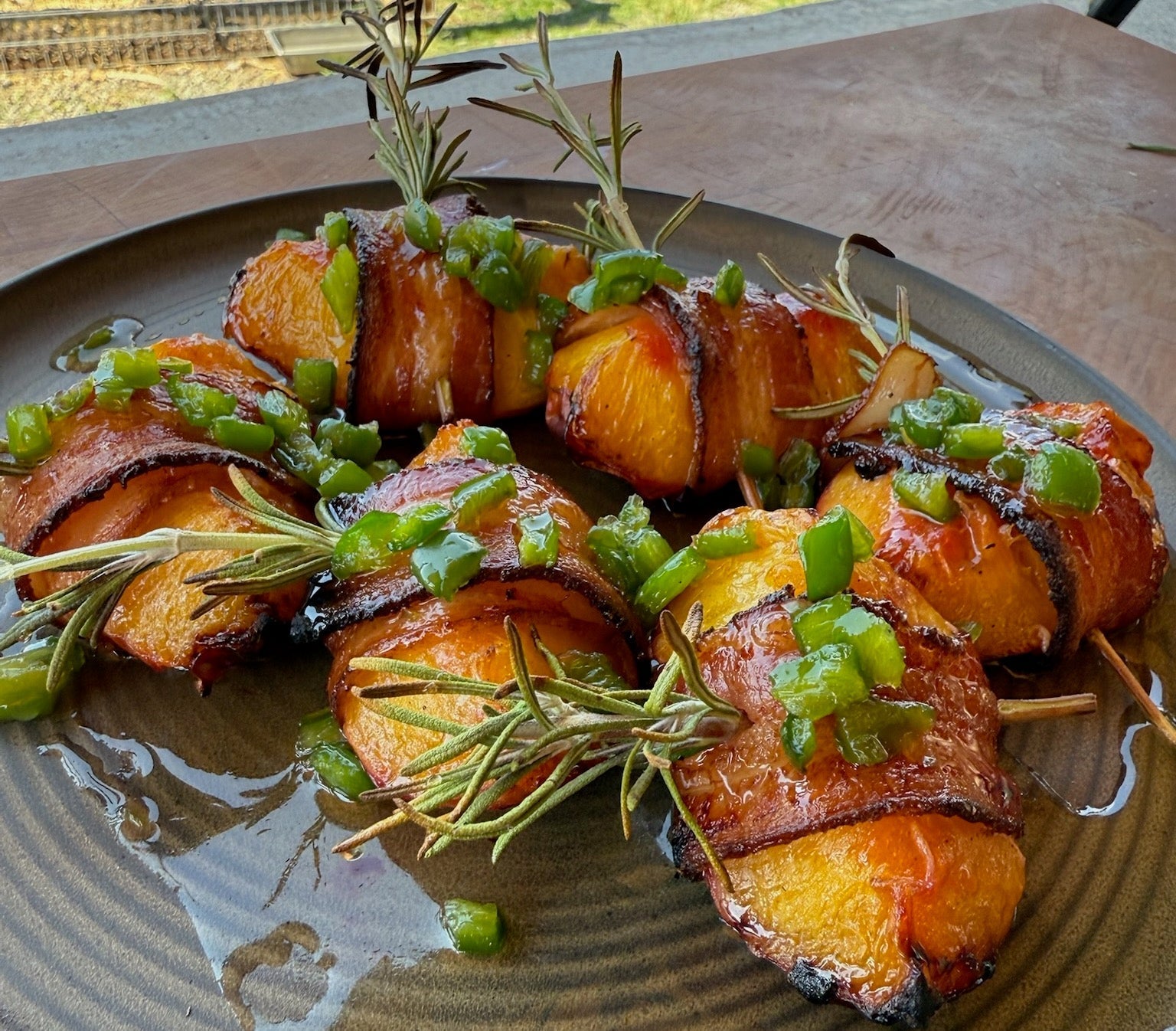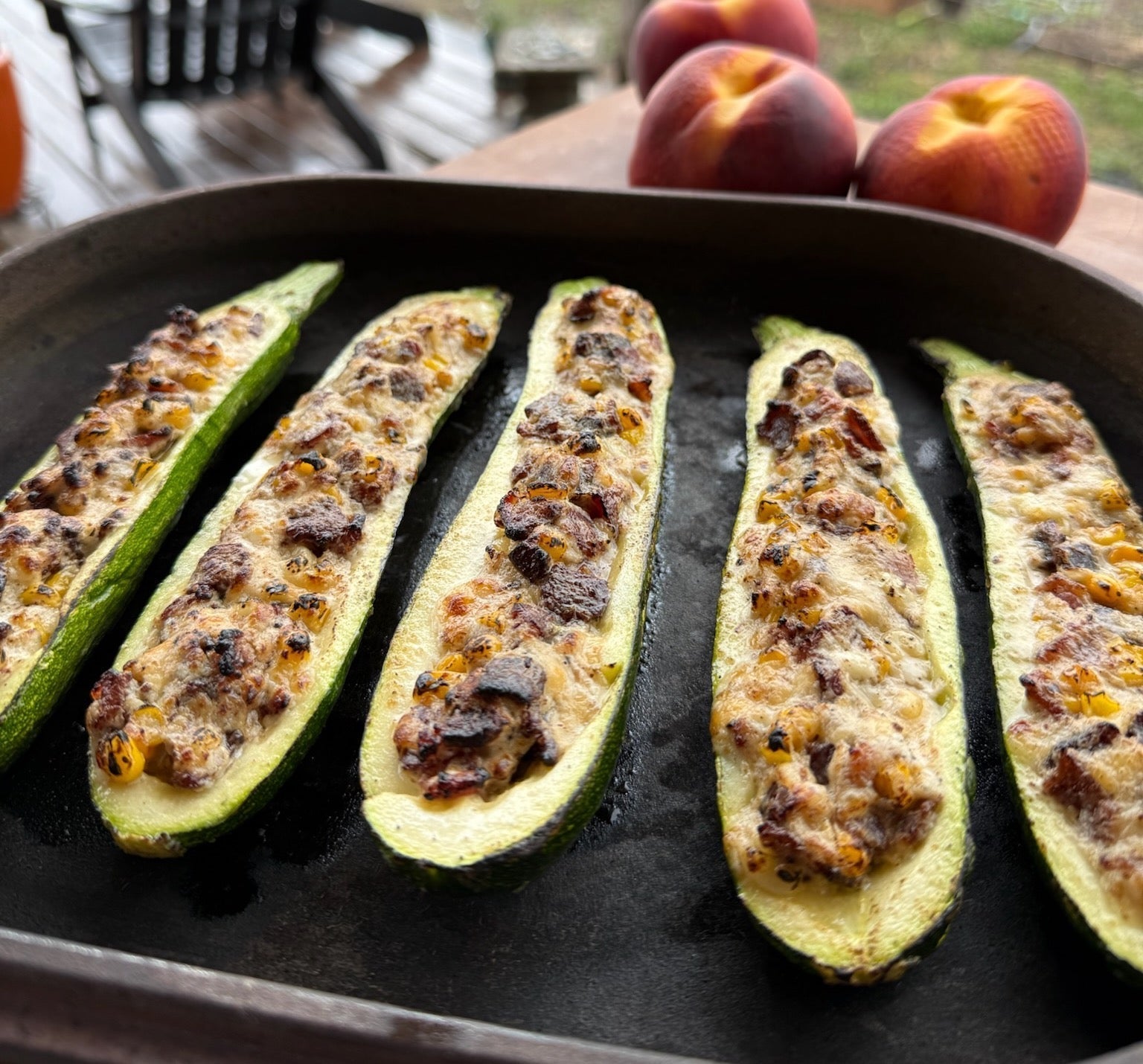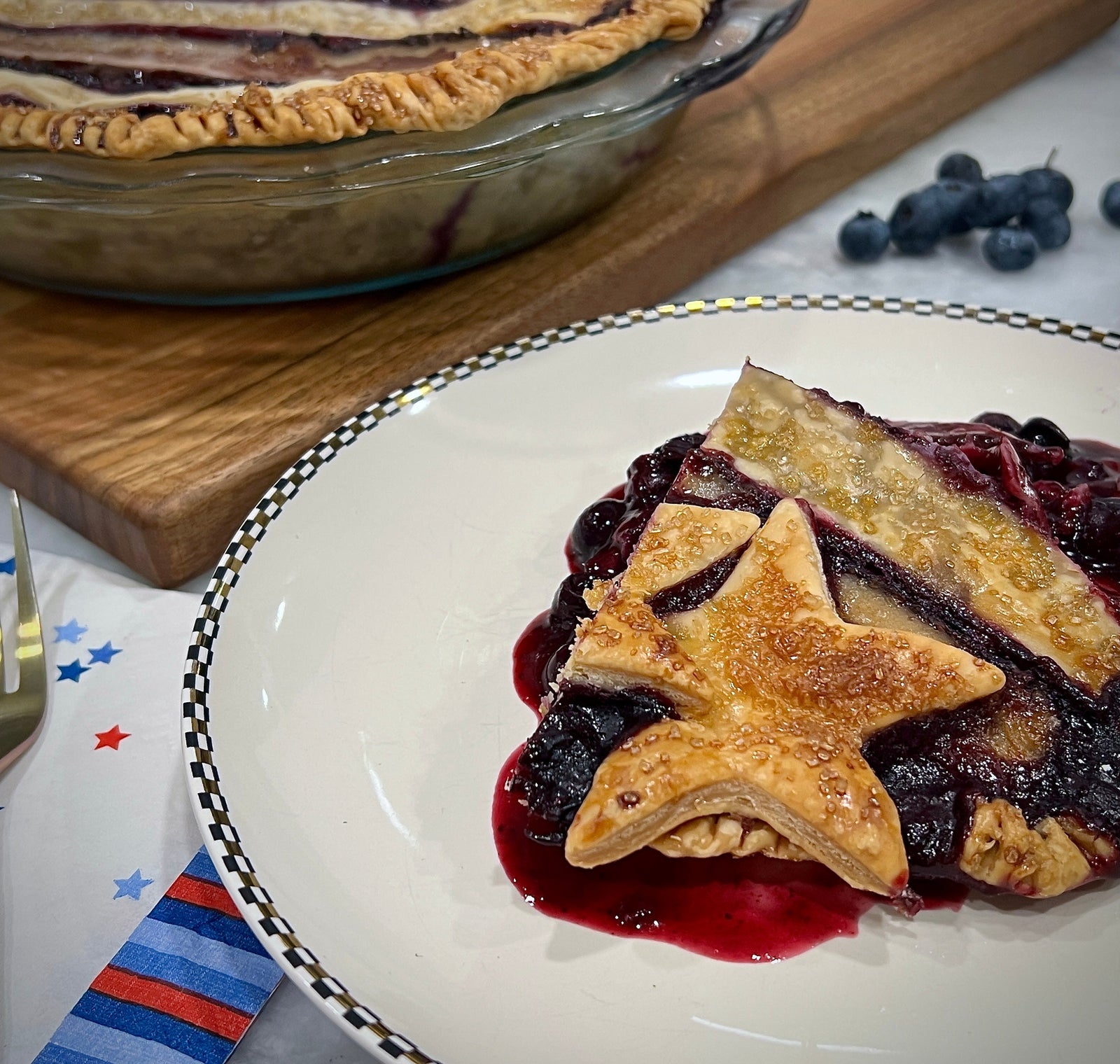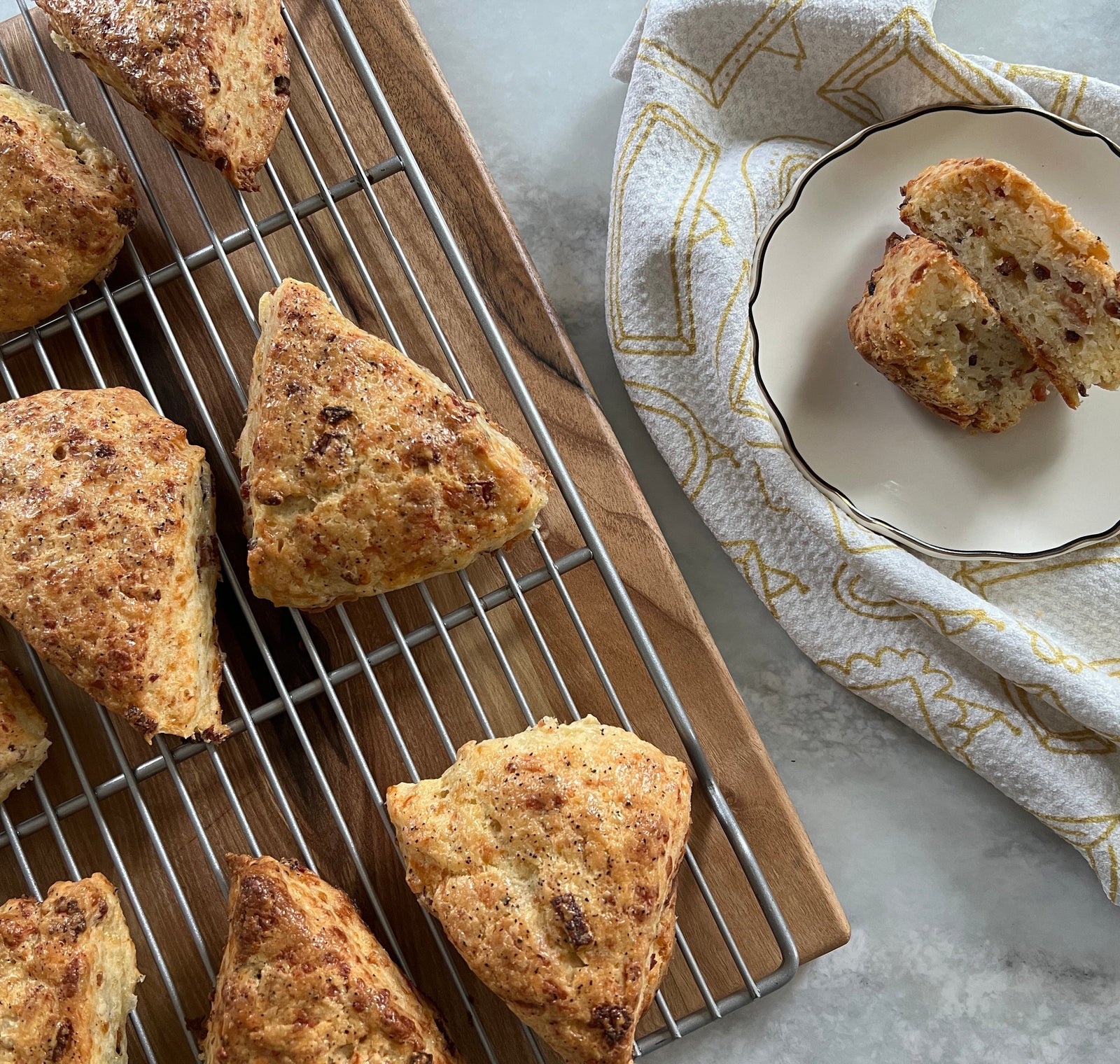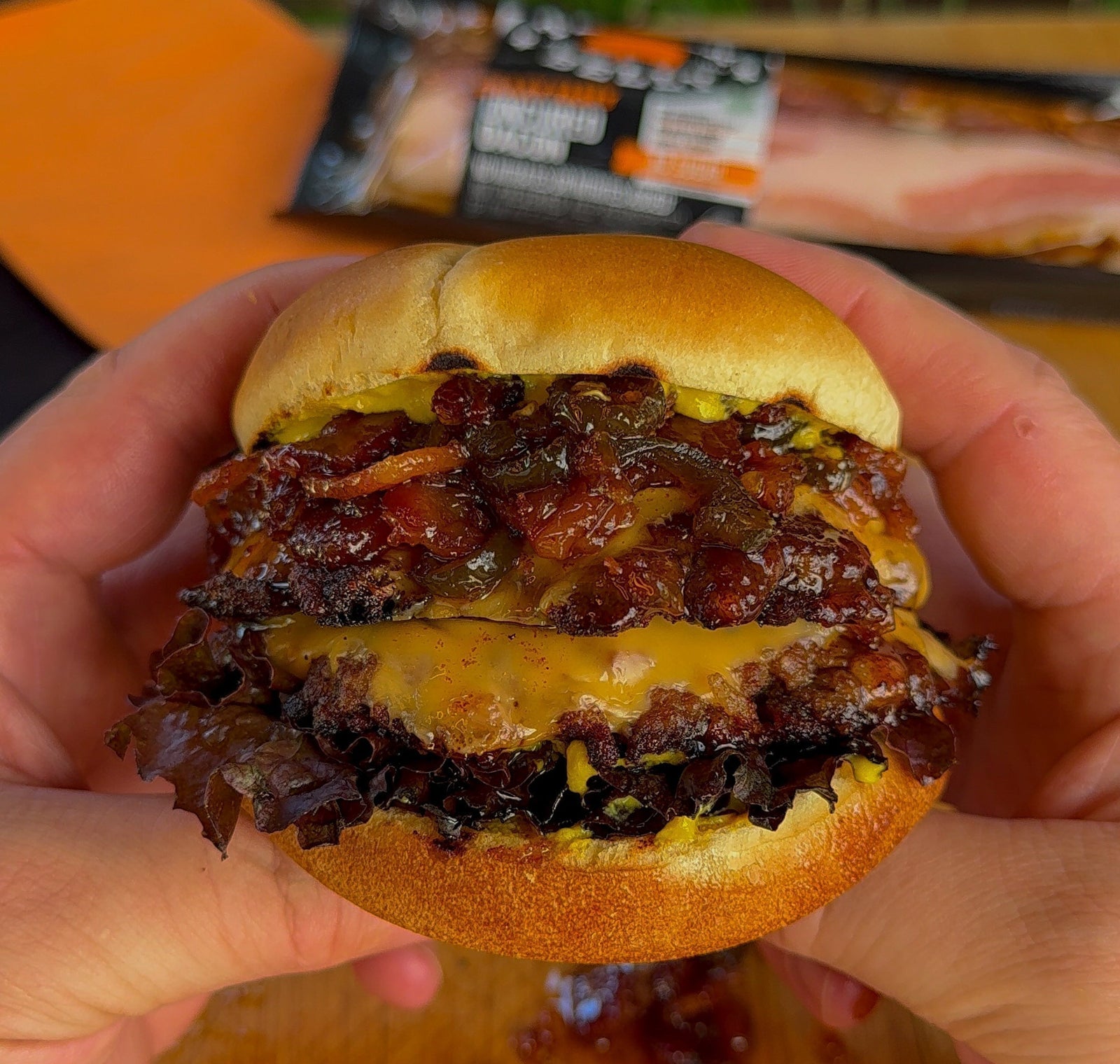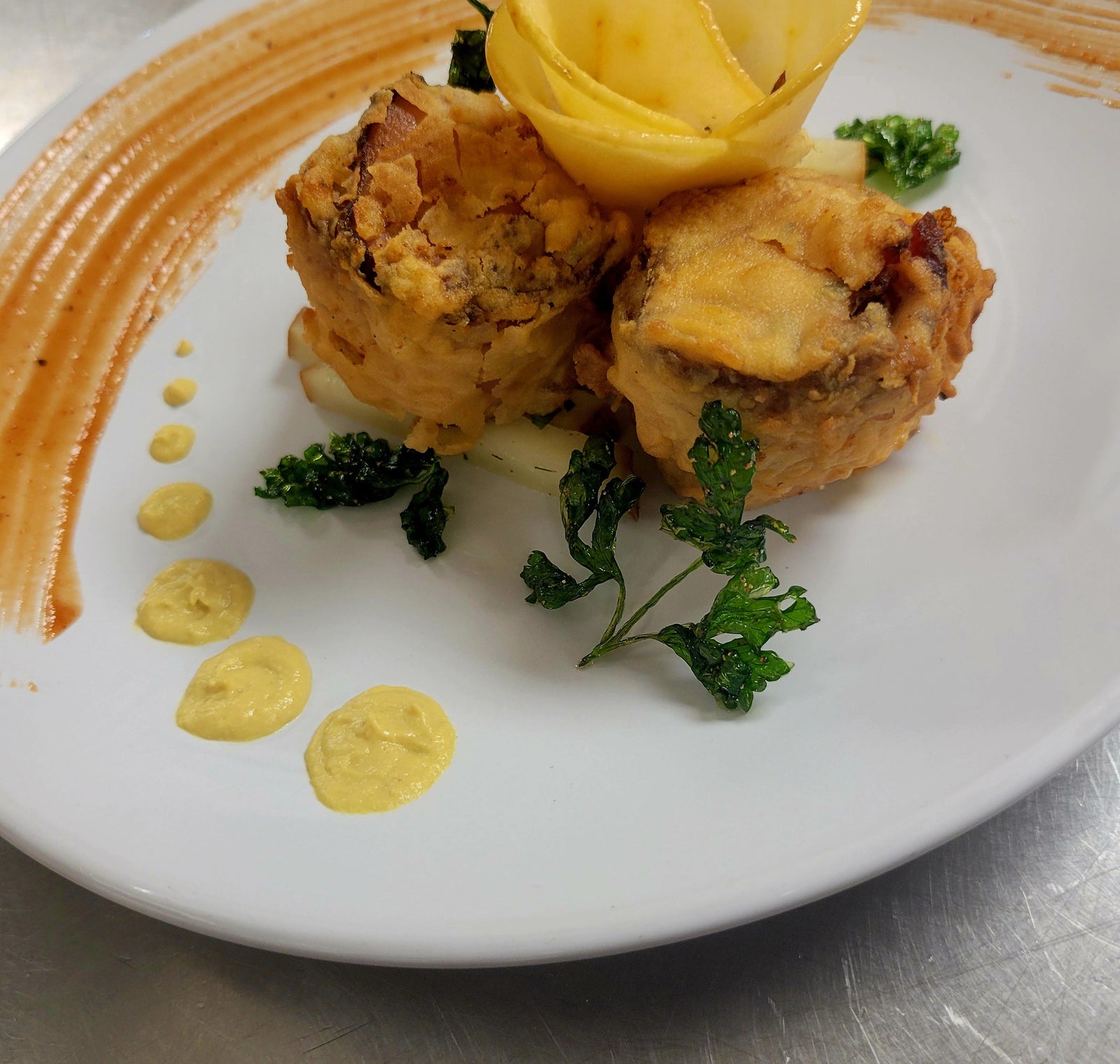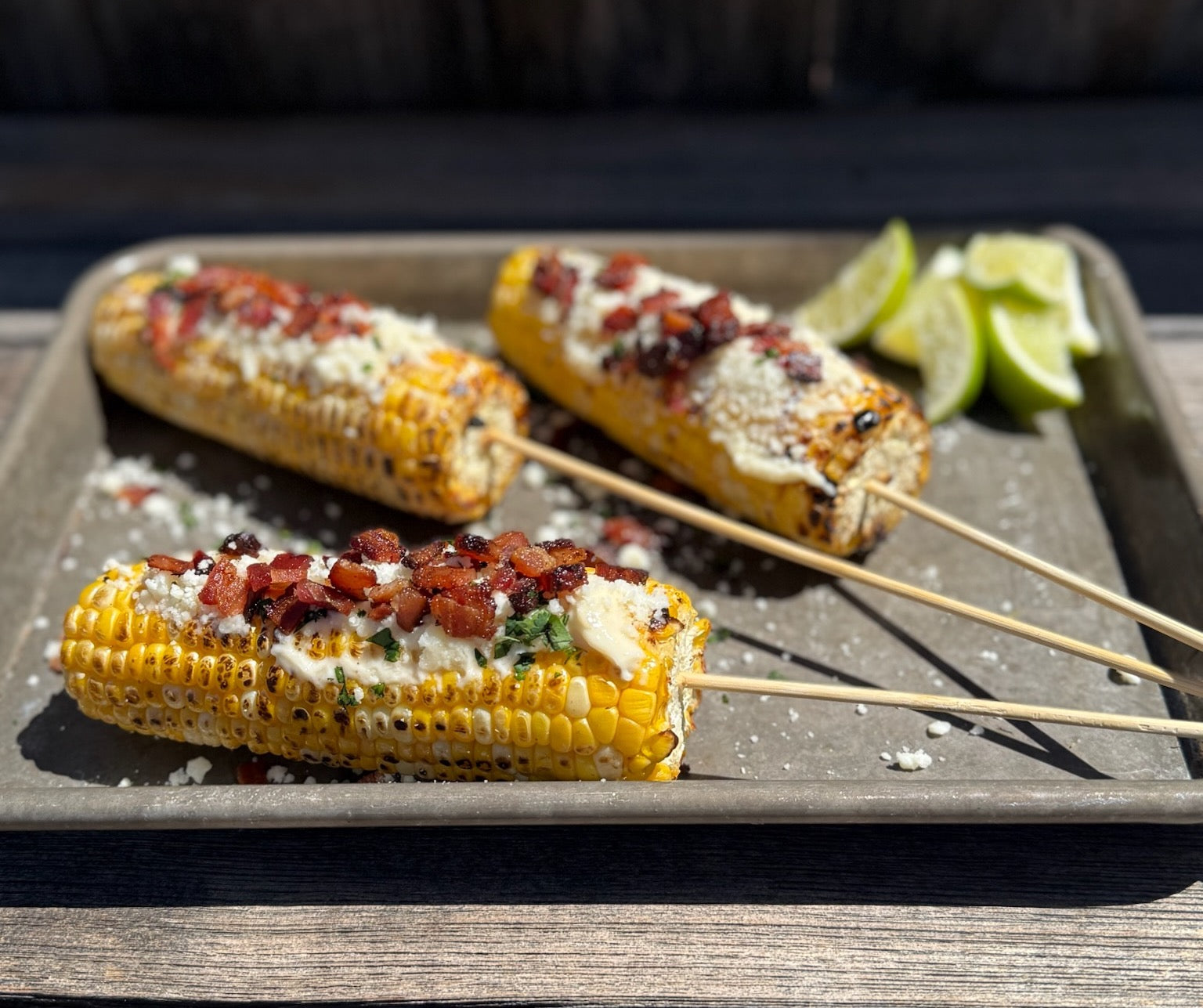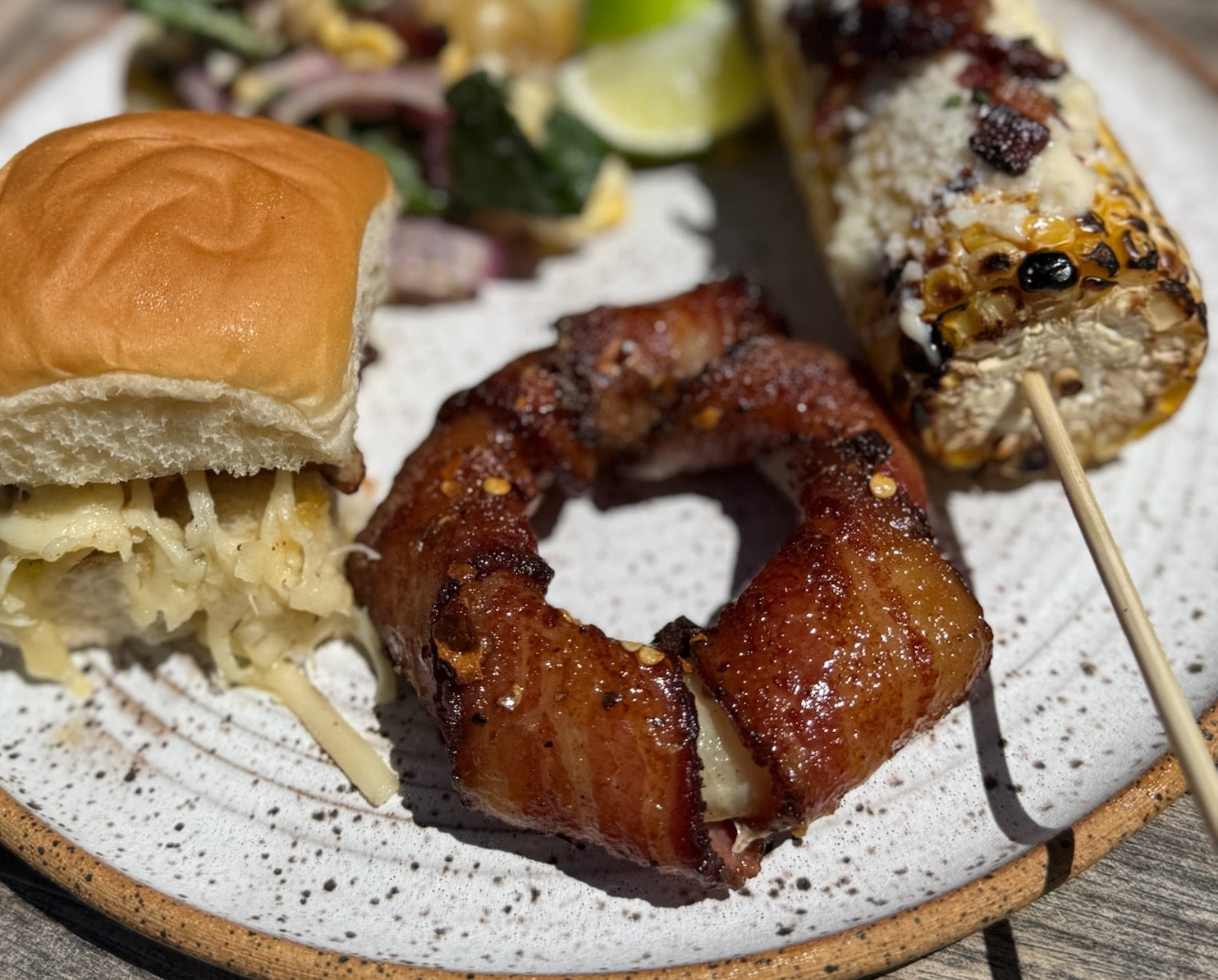Why Runners Should Eat More Pork
Tue, Oct 28, 2014 / 5 min read

By Pamela Nisevich Bede, M.S., R.D., Runner's World
The other white meat packs tons of nutritional benefits for runners.
 Image by iStockphoto
Being that October is National Pork Month, it seems only right to take a moment to consider adding “the other white meat” to your daily plate. Some runners shy away from pork, deeming it too high in total fat, too high in saturated fat, or even total calories. And while some cuts really do pack a fat and calorie punch, ounce for ounce, cuts like pork tenderloin have less fat than a chicken breast. And, like it or not, food scientists are finding ways to make it leaner and leaner every year. Six of the most common pork cuts have, on average, 16 percent less fat and 27 percent less saturated fat than 19 years ago and a 3-ounce serving of pork tenderloin contains only 2.98 grams of fat, whereas a 3-ounce serving of skinless chicken breast contains 3.03 grams of fat.
Of course, it’s often the fat that makes pork (bacon anyone?) a delicious addition to sandwiches, salads, ice cream, you name it, so many runners and gourmands opt to include higher fat cuts in their diet.
Putting my reputation on the line, I’ll readily admit that I love bacon. But I should note that I fit it into a diet that’s comprised of plenty of fruits, veggies, and moderation. But since not everyone is into balance and moderation, it’s probably a good thing that not everyone has a taste for bacon, pancetta, and ham. After all, some varieties of bacon and cured products contain loads of sodium and other preservatives, such as nitrates, that research suggests may raise blood pressure or increase your risk for cancer. Then again, according to the National Pork Board, there are no studies that show a causal link between processed meats and cancer. In addition, the board notes that 95 percent of nitrates (a precursor to nitrites) come from vegetables and our own saliva. But I think we’d all agree that there are significant differences between the nutrient content and quality of food items like beets and dark leafy greens (which are full of health and performance-boosting nitrates) and the chemical nitrites that are used as a preservative. Regardless, in order to curb potential or nonexistent (depending on who you ask) risk, be sure to choose fresh meats or packaged products that contain no preservatives—typically labeled "all-natural"—whenever possible.
So what can lean cuts of pork do for your running and waistline?
According to the (pork) Checkoff-funded project conducted by Purdue University and published in the journal Obesity, women who cut calories but included more protein, including six ounces of lean pork per day, kept more muscle mass while losing weight than women who consumed the same amount of calories but less protein. Consuming a higher-protein diet also helped retain a sense of satiety or fullness after meals. My professional opinion: it’s reasonable to assume that a reduced calorie diet that’s rich in lean protein, perhaps regardless of the source, will result in similar results.
Pork is an excellent source of the B-vitamins thiamin, niacin, riboflavin, and B-6 as well as phosphorus. It’s also a good source of zinc and potassium. All of which play a role in establishing optimal health, metabolism, and immune function.
Before writing this post, I was already including lean cuts of pork in my diet simply because I was tired of chicken, looking for another economical yet lean option. What I craved was something a bit more indulgent but also something I could feel good about. And then I came across Tender Belly, a homegrown, family company that happens to sponsor a handful of athletes (disclaimer: not me) while selling pork that’s been fed a 100 percent vegetarian diet, free of antibiotics and hormones. Tender Belly also follows more of a grass-roots policy, working in partnership with networks of co-op farmers in Iowa, Missouri and Colorado (all small, family-owned farms); making it a perfect match for runners trying to eat “cleaner” while supporting local / smaller farms. As I was looking for a new recipe to try (to incorporate indulgent bacon in a healthy way), Chef Nate King from Cache Cache in Aspen, Colorado was kind enough to send the following recipe along:
Cache Cache frisée salad with Tender Belly bacon.
Chef Nate says: This is the recipe for the famous Cache Cache frisée salad. I always remembered my high school track coach having us suck down some honey before our races for some good pure energy… Not only does it taste fantastic, but the body can turn it into great energy. The balsamic dressing for this salad calls for a good amount of honey. The most important part of this preparation though, is making sure you add some of the warm bacon fat to the bowl when dressing your greens. This fat will mix with the balsamic dressing and make the salad "complete." If you can't find frisée lettuce heads, baby arugula or your favorite salad mix will taste great also. Preferably grown by someone you know!
Makes 4-6 servings
Ingredients:
Salad
3 Large heads of frisée lettuce
1c Cooked Tender Belly bacon
1tsp Chopped fresh garlic
1tsp Chopped fresh shallots
Dressing
½ c Balsamic vinegar
¼ c Local raw honey
½ tsp Dijon mustard
1 ¼ c olive oil/ canola oil/ grapeseed oil
To make dressing, in a blender, combine the vinegar, honey & mustard. With the blender running on medium, slowly add the oil until dressing becomes thick.
Salad Directions:
Slice the raw Tender Belly bacon into 1/4 inch strips. Slowly render and cook the bacon in a heavy bottomed sauté pan on your stovetop over medium heat. These bacon pieces are known as "lardons." When the lardons are to your desires doneness, remove the pan from the direct heat but keep the bacon nice & warm.
While the bacon is rendering, prep the rest of the salad. Clean the lettuce thoroughly and pat dry. Cut the large frisée lettuce heads down to the tender, less bitter, yellow centers. Cut off the root end. Tear apart the lettuce by hand into more manageable bite size pieces. Place in a bowl large enough to toss with dressing. Add garlic & shallots. (This should be done sparingly to your taste or your guests tastes.) Add fresh ground black pepper if desired.
Add the warm bacon and a bit of the warm fat to the bowl. Add enough balsamic dressing to coat the lettuce to your liking (there should be dressing left over). Mix well. The bacon fat will combine with the dressing. Plate immediately and serve.
Chef Nate adds: A good garnish for this salad is a warm poached or sunny side farm egg. Set on top so that the yolk can be poked an allowed to ooze down into the salad. Another popular garnish is some nice fresh chèvre from your closest goat cheese producer. Also don't be afraid to add some nice raw seasonal veggies.
Image by iStockphoto
Being that October is National Pork Month, it seems only right to take a moment to consider adding “the other white meat” to your daily plate. Some runners shy away from pork, deeming it too high in total fat, too high in saturated fat, or even total calories. And while some cuts really do pack a fat and calorie punch, ounce for ounce, cuts like pork tenderloin have less fat than a chicken breast. And, like it or not, food scientists are finding ways to make it leaner and leaner every year. Six of the most common pork cuts have, on average, 16 percent less fat and 27 percent less saturated fat than 19 years ago and a 3-ounce serving of pork tenderloin contains only 2.98 grams of fat, whereas a 3-ounce serving of skinless chicken breast contains 3.03 grams of fat.
Of course, it’s often the fat that makes pork (bacon anyone?) a delicious addition to sandwiches, salads, ice cream, you name it, so many runners and gourmands opt to include higher fat cuts in their diet.
Putting my reputation on the line, I’ll readily admit that I love bacon. But I should note that I fit it into a diet that’s comprised of plenty of fruits, veggies, and moderation. But since not everyone is into balance and moderation, it’s probably a good thing that not everyone has a taste for bacon, pancetta, and ham. After all, some varieties of bacon and cured products contain loads of sodium and other preservatives, such as nitrates, that research suggests may raise blood pressure or increase your risk for cancer. Then again, according to the National Pork Board, there are no studies that show a causal link between processed meats and cancer. In addition, the board notes that 95 percent of nitrates (a precursor to nitrites) come from vegetables and our own saliva. But I think we’d all agree that there are significant differences between the nutrient content and quality of food items like beets and dark leafy greens (which are full of health and performance-boosting nitrates) and the chemical nitrites that are used as a preservative. Regardless, in order to curb potential or nonexistent (depending on who you ask) risk, be sure to choose fresh meats or packaged products that contain no preservatives—typically labeled "all-natural"—whenever possible.
So what can lean cuts of pork do for your running and waistline?
According to the (pork) Checkoff-funded project conducted by Purdue University and published in the journal Obesity, women who cut calories but included more protein, including six ounces of lean pork per day, kept more muscle mass while losing weight than women who consumed the same amount of calories but less protein. Consuming a higher-protein diet also helped retain a sense of satiety or fullness after meals. My professional opinion: it’s reasonable to assume that a reduced calorie diet that’s rich in lean protein, perhaps regardless of the source, will result in similar results.
Pork is an excellent source of the B-vitamins thiamin, niacin, riboflavin, and B-6 as well as phosphorus. It’s also a good source of zinc and potassium. All of which play a role in establishing optimal health, metabolism, and immune function.
Before writing this post, I was already including lean cuts of pork in my diet simply because I was tired of chicken, looking for another economical yet lean option. What I craved was something a bit more indulgent but also something I could feel good about. And then I came across Tender Belly, a homegrown, family company that happens to sponsor a handful of athletes (disclaimer: not me) while selling pork that’s been fed a 100 percent vegetarian diet, free of antibiotics and hormones. Tender Belly also follows more of a grass-roots policy, working in partnership with networks of co-op farmers in Iowa, Missouri and Colorado (all small, family-owned farms); making it a perfect match for runners trying to eat “cleaner” while supporting local / smaller farms. As I was looking for a new recipe to try (to incorporate indulgent bacon in a healthy way), Chef Nate King from Cache Cache in Aspen, Colorado was kind enough to send the following recipe along:
Cache Cache frisée salad with Tender Belly bacon.
Chef Nate says: This is the recipe for the famous Cache Cache frisée salad. I always remembered my high school track coach having us suck down some honey before our races for some good pure energy… Not only does it taste fantastic, but the body can turn it into great energy. The balsamic dressing for this salad calls for a good amount of honey. The most important part of this preparation though, is making sure you add some of the warm bacon fat to the bowl when dressing your greens. This fat will mix with the balsamic dressing and make the salad "complete." If you can't find frisée lettuce heads, baby arugula or your favorite salad mix will taste great also. Preferably grown by someone you know!
Makes 4-6 servings
Ingredients:
Salad
3 Large heads of frisée lettuce
1c Cooked Tender Belly bacon
1tsp Chopped fresh garlic
1tsp Chopped fresh shallots
Dressing
½ c Balsamic vinegar
¼ c Local raw honey
½ tsp Dijon mustard
1 ¼ c olive oil/ canola oil/ grapeseed oil
To make dressing, in a blender, combine the vinegar, honey & mustard. With the blender running on medium, slowly add the oil until dressing becomes thick.
Salad Directions:
Slice the raw Tender Belly bacon into 1/4 inch strips. Slowly render and cook the bacon in a heavy bottomed sauté pan on your stovetop over medium heat. These bacon pieces are known as "lardons." When the lardons are to your desires doneness, remove the pan from the direct heat but keep the bacon nice & warm.
While the bacon is rendering, prep the rest of the salad. Clean the lettuce thoroughly and pat dry. Cut the large frisée lettuce heads down to the tender, less bitter, yellow centers. Cut off the root end. Tear apart the lettuce by hand into more manageable bite size pieces. Place in a bowl large enough to toss with dressing. Add garlic & shallots. (This should be done sparingly to your taste or your guests tastes.) Add fresh ground black pepper if desired.
Add the warm bacon and a bit of the warm fat to the bowl. Add enough balsamic dressing to coat the lettuce to your liking (there should be dressing left over). Mix well. The bacon fat will combine with the dressing. Plate immediately and serve.
Chef Nate adds: A good garnish for this salad is a warm poached or sunny side farm egg. Set on top so that the yolk can be poked an allowed to ooze down into the salad. Another popular garnish is some nice fresh chèvre from your closest goat cheese producer. Also don't be afraid to add some nice raw seasonal veggies.
 Image by iStockphoto
Being that October is National Pork Month, it seems only right to take a moment to consider adding “the other white meat” to your daily plate. Some runners shy away from pork, deeming it too high in total fat, too high in saturated fat, or even total calories. And while some cuts really do pack a fat and calorie punch, ounce for ounce, cuts like pork tenderloin have less fat than a chicken breast. And, like it or not, food scientists are finding ways to make it leaner and leaner every year. Six of the most common pork cuts have, on average, 16 percent less fat and 27 percent less saturated fat than 19 years ago and a 3-ounce serving of pork tenderloin contains only 2.98 grams of fat, whereas a 3-ounce serving of skinless chicken breast contains 3.03 grams of fat.
Of course, it’s often the fat that makes pork (bacon anyone?) a delicious addition to sandwiches, salads, ice cream, you name it, so many runners and gourmands opt to include higher fat cuts in their diet.
Putting my reputation on the line, I’ll readily admit that I love bacon. But I should note that I fit it into a diet that’s comprised of plenty of fruits, veggies, and moderation. But since not everyone is into balance and moderation, it’s probably a good thing that not everyone has a taste for bacon, pancetta, and ham. After all, some varieties of bacon and cured products contain loads of sodium and other preservatives, such as nitrates, that research suggests may raise blood pressure or increase your risk for cancer. Then again, according to the National Pork Board, there are no studies that show a causal link between processed meats and cancer. In addition, the board notes that 95 percent of nitrates (a precursor to nitrites) come from vegetables and our own saliva. But I think we’d all agree that there are significant differences between the nutrient content and quality of food items like beets and dark leafy greens (which are full of health and performance-boosting nitrates) and the chemical nitrites that are used as a preservative. Regardless, in order to curb potential or nonexistent (depending on who you ask) risk, be sure to choose fresh meats or packaged products that contain no preservatives—typically labeled "all-natural"—whenever possible.
So what can lean cuts of pork do for your running and waistline?
According to the (pork) Checkoff-funded project conducted by Purdue University and published in the journal Obesity, women who cut calories but included more protein, including six ounces of lean pork per day, kept more muscle mass while losing weight than women who consumed the same amount of calories but less protein. Consuming a higher-protein diet also helped retain a sense of satiety or fullness after meals. My professional opinion: it’s reasonable to assume that a reduced calorie diet that’s rich in lean protein, perhaps regardless of the source, will result in similar results.
Pork is an excellent source of the B-vitamins thiamin, niacin, riboflavin, and B-6 as well as phosphorus. It’s also a good source of zinc and potassium. All of which play a role in establishing optimal health, metabolism, and immune function.
Before writing this post, I was already including lean cuts of pork in my diet simply because I was tired of chicken, looking for another economical yet lean option. What I craved was something a bit more indulgent but also something I could feel good about. And then I came across Tender Belly, a homegrown, family company that happens to sponsor a handful of athletes (disclaimer: not me) while selling pork that’s been fed a 100 percent vegetarian diet, free of antibiotics and hormones. Tender Belly also follows more of a grass-roots policy, working in partnership with networks of co-op farmers in Iowa, Missouri and Colorado (all small, family-owned farms); making it a perfect match for runners trying to eat “cleaner” while supporting local / smaller farms. As I was looking for a new recipe to try (to incorporate indulgent bacon in a healthy way), Chef Nate King from Cache Cache in Aspen, Colorado was kind enough to send the following recipe along:
Cache Cache frisée salad with Tender Belly bacon.
Chef Nate says: This is the recipe for the famous Cache Cache frisée salad. I always remembered my high school track coach having us suck down some honey before our races for some good pure energy… Not only does it taste fantastic, but the body can turn it into great energy. The balsamic dressing for this salad calls for a good amount of honey. The most important part of this preparation though, is making sure you add some of the warm bacon fat to the bowl when dressing your greens. This fat will mix with the balsamic dressing and make the salad "complete." If you can't find frisée lettuce heads, baby arugula or your favorite salad mix will taste great also. Preferably grown by someone you know!
Makes 4-6 servings
Ingredients:
Salad
3 Large heads of frisée lettuce
1c Cooked Tender Belly bacon
1tsp Chopped fresh garlic
1tsp Chopped fresh shallots
Dressing
½ c Balsamic vinegar
¼ c Local raw honey
½ tsp Dijon mustard
1 ¼ c olive oil/ canola oil/ grapeseed oil
To make dressing, in a blender, combine the vinegar, honey & mustard. With the blender running on medium, slowly add the oil until dressing becomes thick.
Salad Directions:
Slice the raw Tender Belly bacon into 1/4 inch strips. Slowly render and cook the bacon in a heavy bottomed sauté pan on your stovetop over medium heat. These bacon pieces are known as "lardons." When the lardons are to your desires doneness, remove the pan from the direct heat but keep the bacon nice & warm.
While the bacon is rendering, prep the rest of the salad. Clean the lettuce thoroughly and pat dry. Cut the large frisée lettuce heads down to the tender, less bitter, yellow centers. Cut off the root end. Tear apart the lettuce by hand into more manageable bite size pieces. Place in a bowl large enough to toss with dressing. Add garlic & shallots. (This should be done sparingly to your taste or your guests tastes.) Add fresh ground black pepper if desired.
Add the warm bacon and a bit of the warm fat to the bowl. Add enough balsamic dressing to coat the lettuce to your liking (there should be dressing left over). Mix well. The bacon fat will combine with the dressing. Plate immediately and serve.
Chef Nate adds: A good garnish for this salad is a warm poached or sunny side farm egg. Set on top so that the yolk can be poked an allowed to ooze down into the salad. Another popular garnish is some nice fresh chèvre from your closest goat cheese producer. Also don't be afraid to add some nice raw seasonal veggies.
Image by iStockphoto
Being that October is National Pork Month, it seems only right to take a moment to consider adding “the other white meat” to your daily plate. Some runners shy away from pork, deeming it too high in total fat, too high in saturated fat, or even total calories. And while some cuts really do pack a fat and calorie punch, ounce for ounce, cuts like pork tenderloin have less fat than a chicken breast. And, like it or not, food scientists are finding ways to make it leaner and leaner every year. Six of the most common pork cuts have, on average, 16 percent less fat and 27 percent less saturated fat than 19 years ago and a 3-ounce serving of pork tenderloin contains only 2.98 grams of fat, whereas a 3-ounce serving of skinless chicken breast contains 3.03 grams of fat.
Of course, it’s often the fat that makes pork (bacon anyone?) a delicious addition to sandwiches, salads, ice cream, you name it, so many runners and gourmands opt to include higher fat cuts in their diet.
Putting my reputation on the line, I’ll readily admit that I love bacon. But I should note that I fit it into a diet that’s comprised of plenty of fruits, veggies, and moderation. But since not everyone is into balance and moderation, it’s probably a good thing that not everyone has a taste for bacon, pancetta, and ham. After all, some varieties of bacon and cured products contain loads of sodium and other preservatives, such as nitrates, that research suggests may raise blood pressure or increase your risk for cancer. Then again, according to the National Pork Board, there are no studies that show a causal link between processed meats and cancer. In addition, the board notes that 95 percent of nitrates (a precursor to nitrites) come from vegetables and our own saliva. But I think we’d all agree that there are significant differences between the nutrient content and quality of food items like beets and dark leafy greens (which are full of health and performance-boosting nitrates) and the chemical nitrites that are used as a preservative. Regardless, in order to curb potential or nonexistent (depending on who you ask) risk, be sure to choose fresh meats or packaged products that contain no preservatives—typically labeled "all-natural"—whenever possible.
So what can lean cuts of pork do for your running and waistline?
According to the (pork) Checkoff-funded project conducted by Purdue University and published in the journal Obesity, women who cut calories but included more protein, including six ounces of lean pork per day, kept more muscle mass while losing weight than women who consumed the same amount of calories but less protein. Consuming a higher-protein diet also helped retain a sense of satiety or fullness after meals. My professional opinion: it’s reasonable to assume that a reduced calorie diet that’s rich in lean protein, perhaps regardless of the source, will result in similar results.
Pork is an excellent source of the B-vitamins thiamin, niacin, riboflavin, and B-6 as well as phosphorus. It’s also a good source of zinc and potassium. All of which play a role in establishing optimal health, metabolism, and immune function.
Before writing this post, I was already including lean cuts of pork in my diet simply because I was tired of chicken, looking for another economical yet lean option. What I craved was something a bit more indulgent but also something I could feel good about. And then I came across Tender Belly, a homegrown, family company that happens to sponsor a handful of athletes (disclaimer: not me) while selling pork that’s been fed a 100 percent vegetarian diet, free of antibiotics and hormones. Tender Belly also follows more of a grass-roots policy, working in partnership with networks of co-op farmers in Iowa, Missouri and Colorado (all small, family-owned farms); making it a perfect match for runners trying to eat “cleaner” while supporting local / smaller farms. As I was looking for a new recipe to try (to incorporate indulgent bacon in a healthy way), Chef Nate King from Cache Cache in Aspen, Colorado was kind enough to send the following recipe along:
Cache Cache frisée salad with Tender Belly bacon.
Chef Nate says: This is the recipe for the famous Cache Cache frisée salad. I always remembered my high school track coach having us suck down some honey before our races for some good pure energy… Not only does it taste fantastic, but the body can turn it into great energy. The balsamic dressing for this salad calls for a good amount of honey. The most important part of this preparation though, is making sure you add some of the warm bacon fat to the bowl when dressing your greens. This fat will mix with the balsamic dressing and make the salad "complete." If you can't find frisée lettuce heads, baby arugula or your favorite salad mix will taste great also. Preferably grown by someone you know!
Makes 4-6 servings
Ingredients:
Salad
3 Large heads of frisée lettuce
1c Cooked Tender Belly bacon
1tsp Chopped fresh garlic
1tsp Chopped fresh shallots
Dressing
½ c Balsamic vinegar
¼ c Local raw honey
½ tsp Dijon mustard
1 ¼ c olive oil/ canola oil/ grapeseed oil
To make dressing, in a blender, combine the vinegar, honey & mustard. With the blender running on medium, slowly add the oil until dressing becomes thick.
Salad Directions:
Slice the raw Tender Belly bacon into 1/4 inch strips. Slowly render and cook the bacon in a heavy bottomed sauté pan on your stovetop over medium heat. These bacon pieces are known as "lardons." When the lardons are to your desires doneness, remove the pan from the direct heat but keep the bacon nice & warm.
While the bacon is rendering, prep the rest of the salad. Clean the lettuce thoroughly and pat dry. Cut the large frisée lettuce heads down to the tender, less bitter, yellow centers. Cut off the root end. Tear apart the lettuce by hand into more manageable bite size pieces. Place in a bowl large enough to toss with dressing. Add garlic & shallots. (This should be done sparingly to your taste or your guests tastes.) Add fresh ground black pepper if desired.
Add the warm bacon and a bit of the warm fat to the bowl. Add enough balsamic dressing to coat the lettuce to your liking (there should be dressing left over). Mix well. The bacon fat will combine with the dressing. Plate immediately and serve.
Chef Nate adds: A good garnish for this salad is a warm poached or sunny side farm egg. Set on top so that the yolk can be poked an allowed to ooze down into the salad. Another popular garnish is some nice fresh chèvre from your closest goat cheese producer. Also don't be afraid to add some nice raw seasonal veggies.